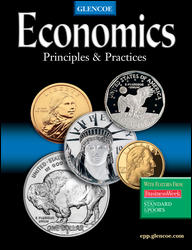
Economics Principles & PracticesChapter 17: International TradeChapter OverviewsChapter 17 focuses on the topic of international trade and the role it plays in our lives. Barriers to trade and the international payments system are also explained. Section 1 examines the basis for trade that is rooted in the concept of comparative advantage and the uneven distribution of resources among nations. If people and countries specialize in the things they do relatively more efficiently, and if they engage in trade to secure the things they do not produce or do not own, then total world output will increase and everyone will be better off. Section 2 deals with the trade barriers such as tariffs and quotas that are used to restrict the free flow of products between nations. Trade barriers are supported for a number of reasons, but the costs of such actions almost always outweigh the benefits. Trade barriers made the Great Depression in the early 1930s even worse, but the world has moved toward freer trade since 1934. Nations have made considerable progress under the GATT, which evolved into the World Trade Organization. The North American Free Trade Agreement (NAFTA) will eventually remove most of the trade barriers in North America. Section 3 examines foreign exchange, the international currencies used by countries to conduct international trade. The current system of flexible exchange rates means that the value of a country's currency fluctuates with the supply and demand for it. The strength of a nation's currency often determines the amount of goods and services that are exchanged in trade. For example, in the mid-1980s the strong dollar led to large trade deficits. When the value of the dollar declined, the trade deficit improved. Because deficits tend to be self-correcting, most nations no longer design economic policies just to improve the balance of payments. |  |















